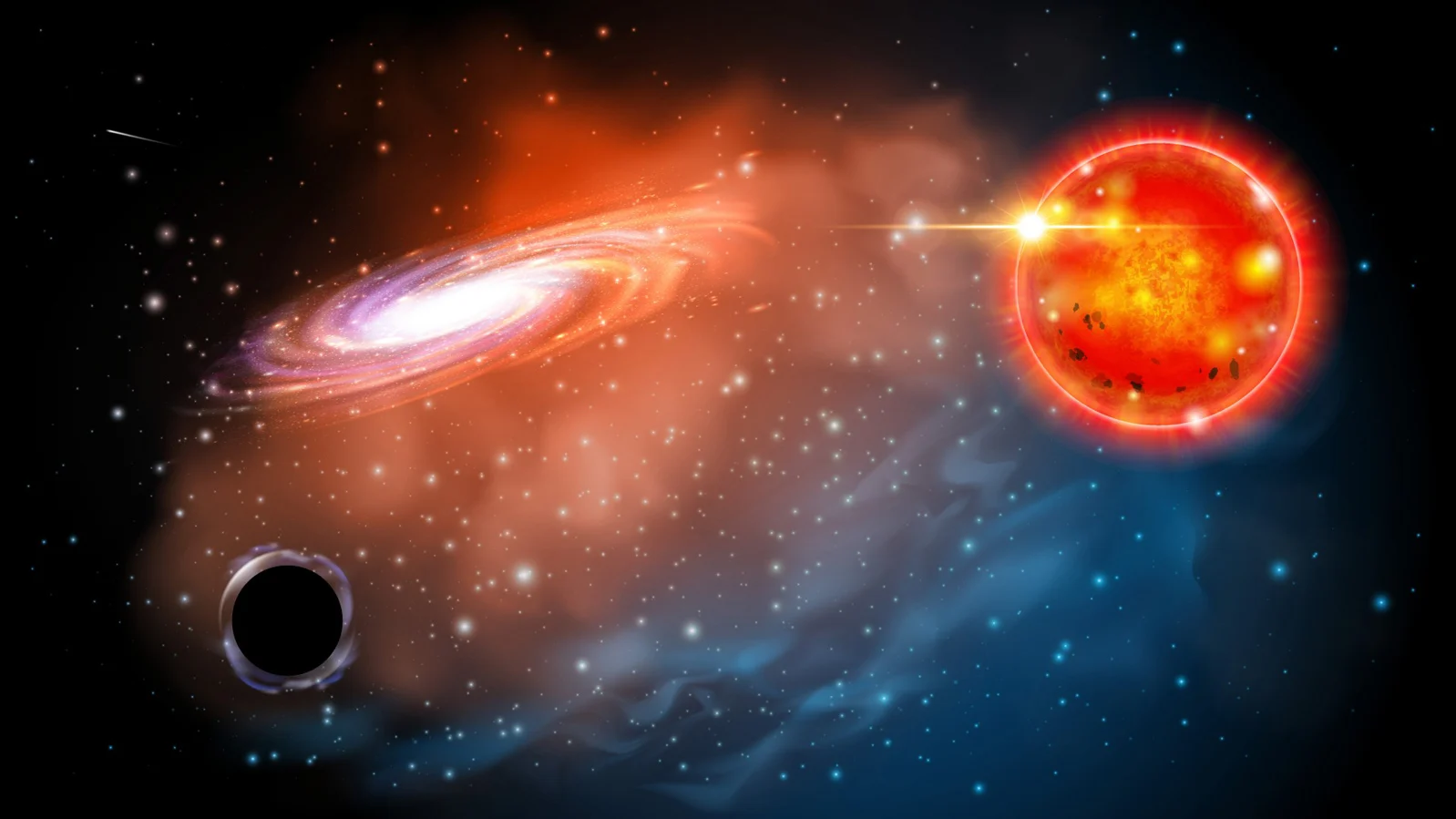
Smallest black hole ever found may be unseen companion to massive star
A tiny black hole, possibly the smallest ever found, may be hiding inside a binary star
Astronomers scanning through our Milky Way galaxy have made a remarkable and possibly rare discovery.
Roughly 8,000 light years away is a binary star with the somewhat convoluted name "2MASS J05215658+4359220". A binary star is when two different stars orbit one another, whether they're similarly-sized or mismatched. There are even pairings of a 'living' star with a dead remnant such as a white dwarf, a neutron star or a black hole.
In the case of 2MASS J05215658+4359220, the astronomers spotted an immense red giant star, and as they watched, the light from the star changed - shifting back and forth between being more reddish to more bluish, over a period of about 83 days.
From this, they figured out that the giant star was orbiting around another object, but they couldn't see the red giant's companion. It appeared as though they'd discovered a previously unknown black hole, and as it would turn out, it was a rather remarkable one.
"What we've done here is come up with a new way to search for black holes, but we've also potentially identified one of the first of a new class of low-mass black holes that astronomers hadn't previously known about." said Todd Thompson, a professor of astronomy at The Ohio State University, and lead author of a new study published in the journal Science last week.
We've seen this kind of before. Two massive stars orbit around one another until one runs out of fuel and explodes as a supernova. The dead star leaves behind a core so dense that it collapses in on itself, forming a kind of 'hole' in spacetime where not even light can escape.

An artist's impression of a close binary between a red giant star and a black hole, with the black hole's glowing accretion disk and twin jets of matter. Credit: ESO/L. Calçada
The intense gravitational pull of the small but massive remnant draws matter off its larger companion. This matter forms into a disk around the black hole, which spirals inward, getting hotter and hotter until it emits x-rays.
According to Thompson and his colleagues, what's unusual about 2MASS J05215658+4359220 is that astronomers can see the red giant half of the binary, but they don't see anything from its companion. They don't even detect the x-rays that an active black hole's accretion disk would emit.
That's not the strangest thing about this pair, though. There are certain explanations for why a black hole wouldn't be emitting x-rays. Maybe it doesn't have an accretion disk right now. Perhaps it's too far away to pull matter off its companion.
What's particularly strange is this black hole's size. It tips the stellar scales at a minimum of 2.6 times the mass of the Sun.
According to the researchers, this tiny black hole is around half the mass of the smallest well-measured black hole ever found, which has around 5 stellar masses.
Furthermore, it is also just above the theoretical limit for how small a black hole can actually be!
Astrophysicists have calculated that the mass of a black hole probably cannot be less than 2.5 times the mass of the Sun. Anything with less mass just wouldn't have enough gravitational pull to collapse in on itself. Instead, it would just end up compacting down into neutron star - a dense, glowing ball of matter, about as wide as a large city.
So, not only does this make it possibly the smallest black hole ever found, it potentially puts it as the first example in a new, previously unknown class of black holes.
"People are trying to understand supernova explosions, how supermassive black stars explode, how the elements were formed in supermassive stars," Thompson said. "So if we could reveal a new population of black holes, it would tell us more about which stars explode, which don’t, which form black holes, which form neutron stars. It opens up a new area of study."
Sources: Ohio State University | Science











